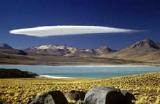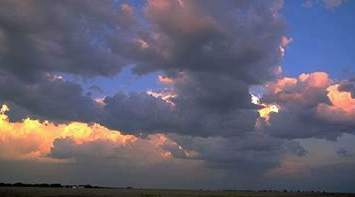|
|
Weather specials |
|
Dedications for Scribe Weekly Radio
|
Climate data
Climate change are we really getting warmer? Steve
Boyle reviews 100 years of data for Scotland to find out.
Hurricanes A hurricane is a type of tropical cyclone, which is a generic term for a low pressure system that generally forms in the tropics. The cyclone is accompanied by thunderstorms and, in the Northern Hemisphere, a counter clockwise circulation of winds near the earth's surface. Space
Weather
It is the largest object of our
solar systems and contains approximately 98% of the total mass. One
hundred and nine Earths would be required to fit across the Sun's disk,
and its interior could hold over 1.3 million Earths. The Sun's outer
visible layer is called the photosphere and has a temperature of
6,000°C (11,000°F). This layer has a mottled appearance due to the
turbulent eruptions of energy at the surface. Weather Satellites: It must have been a breath-taking event for all the meteorologists in the world. In the late evening of august 28 a new weather satellite has been launched. And a special one; for this satellite is the first of a new generation. The expectations are high pitched; it should enhance observation of the planet's weather and long-term climate from space; and a better forecasting and extreme-weather warnings will become possible. Summer Hail: Hail in summer; is this normal? Hail showers are quite common over Britain in westerly and northerly airstreams in winter or in early spring; but during the summer there can be hail as well, however not so often and, what's more, the hailstones can be much bigger than in wintertime. El Nino El Niño is as old as the world. The Inca's in Peru already knew of this phenomenon, and built their cities upon the hills, far away from the unpredictable water with its sudden flooding. Geologists found 13000 year-old traces of El Niños in Peruvian coastal villages. Written reports of El Nino effects in Peru go back to 1500. The Moon and weather For many centuries she's a source of inspiration: The Moon. A reliable beacon during the nightly hours; always makes lovers' hearts beat faster and the moon can even make you crazy -- so they say. And much more is ascribed to the moon; according to lots of proverbs her colou Winds of the med :A Spanish holiday is not complete without a visit to the British mini state that is Gibraltar. .......The ancient Phoenicians merchants must have been struggling and fighting for their lives with the unpredictable and unreliable wind of this Gate: the Levante. Winds of the med 2:De Sirocco is a southerly, which develops when a low above the Mediterranean moves east. This Med-low draws hot air from a large area of the Northern Sahara ----- De Mistral is a northerly downwind in the South of France. It can easily reach hurricane force and in wintertime it can bring freezing temperatures - below zero - to the French Riviera. Wind of the mountains :The föhn wind is famous in the Alps; they are so matched that some think the föhn wind is specific for the Alps, but that's not true. The term is used for all similar winds. Föhn (its a German word) is a warm, strong and often very dry wind that often blows at the north slopes of the Alps, but can also be at other places. Thunder Storms:Thinking
about thunderstorms there's an immediate association with long, lazy
and hot summer days. Though thunderstorms are one of nature's most
violent events, at the end
of a sultry day, they mostly get a warm welcome: refreshing the air and
leaving a
reborn
earth behind. Sea
Mist:Last
week, when huge parts of Britain was sun drenched, with lovely
temperatures
above 20° C, some coastal regions stayed cold and misty. Tornados Spring
Showers: |

